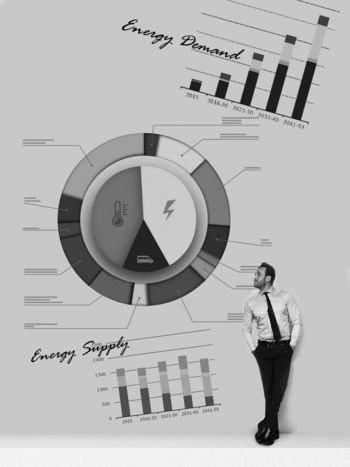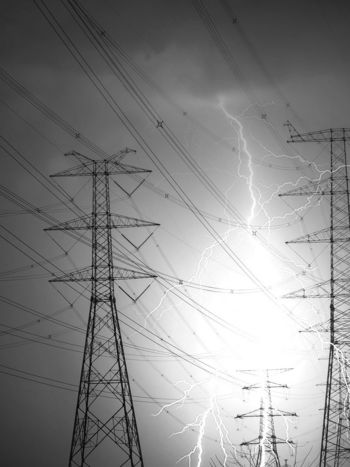Electric Vehicles as Distributed Energy Resource (DER) Systems
The analysis of electric mobility grid integration becomes vital nowadays due to its transformative role in the power and energy system. In fact, electric vehicles (EVs) impose significant variable loads on the grid, requiring a careful assessment about grid impacts and ways to manage these distributed energy resources (DERs). The EV load management is therefore very important to mitigate grid congestions and enhance voltage profiles. Planning studies for grid infrastructure upgrades, such as transformer reinforcements and HV/MV substation expansions are also important aspects to address where the impact of EVs is experienced.
Members
Convenor (PT)
J. PEÇAS LOPES
Secretary (PT)
Filipe J. SOARES
Mark MCGRANAGHAN (IE), Gianni CELLI (IT), Eitaro OMINE (JP), Josh SNODGRASS (US), Alexandre RASI AOKI (BR), Ciceli MARTINS (BR), Pierluigi MANCARELLA (AU), Kurt DEDEKIND (ZA), Francisco Fidel ÁGUEDA RUIZ (ES), Karthikeyan NAINAR (DK), David STEPHENS (AU), Laura JONES (AU), David VANGULICK (BE), Kazuto YUKITA (JP), Hiroyuki HATTA (JP), Nazila RAJAEI (CA), Santosh Kumar PATRO (IN), Kyung Soo KOOK (KR), Penn MARKHAM (US), Rayn FOX (US), Amar RAMAPURAM MATAVALAN (US), Quan LI (UK), Shengen CHEN (US), Md ARIFUJJAMAN (US), Steven RYMSHA (US), Shariq RIAZ (AU), Keyan LIU (CN), Wang LI (CN), Bernd HILLERS (DE), Zechun HU (CN), Darryl CHAPMAN (ZA), Gerard RAFERTY (IE), Thaís MARZALEK BLASI (BR), Johnny RUDOLPH (ZA), Jakub KARASINSKI (NL), Adam MALOYD (UK), Eduardo GÓMEZ LUNA (CO), Diego SANCHEZ (CO), Samuel PEREIRA DA ROCHA (BR), David BUTLER (AU), Faisal BOUCHOTROUCH (ES), Felix LEHFUSS (AT), Fabian HEYMANN (CH), Carmen BAS DOMENECH (AU)
Introduction
EVs act as distributed energy storage units, enabling renewable energy utilization by storing excess generation and by supplying power during peak demand. This supports decarbonization and may stabilize grids reliant on solar and wind energy.
Diferent charging strategies and their impact on the grid need to be understood. Intensive research related to smart charging solutions has been developed in the last years. Other advanced battery charging technologies, such as wireless charging and megawatt charging, also depend on these technologies. Fast and ultra-fast charging is emerging and will present considerable challenges, like demand spikes and grid congestion problems, requiring dedicated grid supply solutions.
Vehicle to Grid (V2G) is still in its infancy but appears to be a solution with considerable potential. Assessing battery degradation from V2G operations needs to be properly assessed before wider adoption.
Provision of ancillary services, like frequency regulation and voltage control, by EVs to both DSO and TSO are feasible and have been extensively studied and their adoption will become a reality in the coming future.
Studies involving standardization of protocols, the creation of economic and supportive policies and incentives will promote EV adoption as grid-friendly DERs. Regulatory measures should also encourage grid-friendly charging behaviours. These studies are essential for leveraging EVs as flexible resources, ensuring a sustainable, eficient, and resilient future power system.
This Technical Brochure (TB) addresses in a detailed manner the critical aspects related with the deployment of EVs, including their impacts on the electrical network, the benefits one can get from their presence and the measures that should be implemented to leverage their adoption.
Scope
The integration of electric mobility into power grids has necessitated diverse approaches for managing its impact, each focusing on distinct aspects of grid operation and renewable energy integration. This brochure thoroughly addresses all state-of-the-art EV charging strategies, as outlined below:
- Uncontrolled Charging: This baseline approach allows EVs to charge whenever necessary without restrictions but leads to significant challenges like peak load increases, grid congestion, and voltage drops. While simple to implement, it exacerbates grid strain, especially during simultaneous charging events.
- Time-of-Use Tarifs (ToU): This tarif incentivizes of-peak charging by ofering lower electricity rates during specific periods. While partially efective in shifting loads, this approach risks creating synchronized charging peaks at tarif transition times, complicating grid management.
- Controlled Smart Charging (V1G): This approach actively manages charging schedules to optimize grid stability, minimize losses, and enhance renewable energy use. Through dynamic load shifting, it flattens demand curves and reduces the need for grid reinforcements. This method is highly efective in integrating renewable sources while supporting grid flexibility.
- Vehicle-to-Grid : V2G builds on smart charging by enabling bidirectional power flows, allowing EVs to provide ancillary services such as frequency regulation and peak shaving. Despite its potential for grid balancing, challenges like battery degradation and high infrastructure costs require further optimization and incentives.
Fast charging and ultra-fast charging, inductive charging and battery swap are also addressed in this TB.
A description on how simulation studies and predictive analytics may support the design of charging management strategies is also provided. These models address battery degradation, and economic impacts.
Results related with studies that evaluate the capability of EVs providing ancillary services are also extensively addressed.
Overall, integrating EVs requires a balanced mix of technical innovation, policy development, and infrastructure planning, with smart charging and V2G emerging as leading solutions for sustainable grid integration, topics that this brochure also develops.





